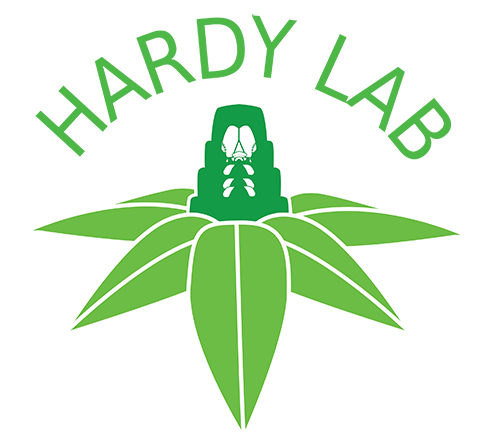González-Hernández, H. 1995 . The Status of the Biological Control of Pineapple Mealybugs in Hawaii. University of Hawaii, Ph.D. Thesis 128 pp.
Notes: [Ph.D. Thesis. Marshall W. Johnson, Advisor.] The pink pineapple mealybug, Dysmicoccus brevipes (Cockerell), and the gray pineapple mealybug, D. neobrevipes Beardsley, (Homoptera: Pseudococcidae) are associated with the disorder mealybug wilt of pineapple (MWP). High mealybug densities promote the occurrence of MWP, an important disease limiting pineapple production. In the absence of ants, such as the big-headed ant, Pheidole megacephala (Fabricius), mealybug densities are usually low. However, in the presence of ants, mealybug densities on pineapple may reach damaging levels, and ultimately result in the occurrence of MWP. Several theories have been proposed to explain the relationships among the mealybugs and the ants. Studies were undertaken to better define the role of established biological control agents in suppressing mealybug populations in Hawaii. In surveys in abandoned pineapple fields on the Hawaiian islands of Oahu and Maui from July 1992 to November 1993, mealybug densities ranged from a mean of 22 to 157 mealybugs per plant. P. megacephala was the dominant ant species found. Five natural enemy species, previously introduced into Hawaii for mealybug control, were associated with D. brevipes and D. neobrevipes. Anagyrus ananatis Gahan (Hymenoptera: Encyrtidae) was the most common parasitoid associated with D. brevipes. The only predators that appeared to have any potential were Nephus bilucernarius Mulsant (Coleoptera: Coccinellidae) and Lobodiplosis pseudococci (Felt.) (Diptera: Cecidomyiidae). Field evaluation studies using the biological check method suggested that A. ananatis was predominantly responsible for the decline of D. brevipes densities in the absence of ants. A study combining the biological check method and the paired-cage exclusion technique indicated that in the absence of P. megacephala, D. brevipes densities were heavily impacted by natural enemies and probably the lack of sanitation (e.g., honeydew removal). Laboratory studies indicated that P. megacephala significantly decreased mealybug parasitization and predation by adult A. ananatis and N. bilucernarius by 73 and 48 percent, respectively. Biological studies were conducted on A. ananatis and N. bilucernarius to define and quantify biological characteristics such as mealybug host and stage preference, developmental times, longevity and fecundity. Additionally, the functional response of A. ananatis was determined when using D. brevipes as a host species.


